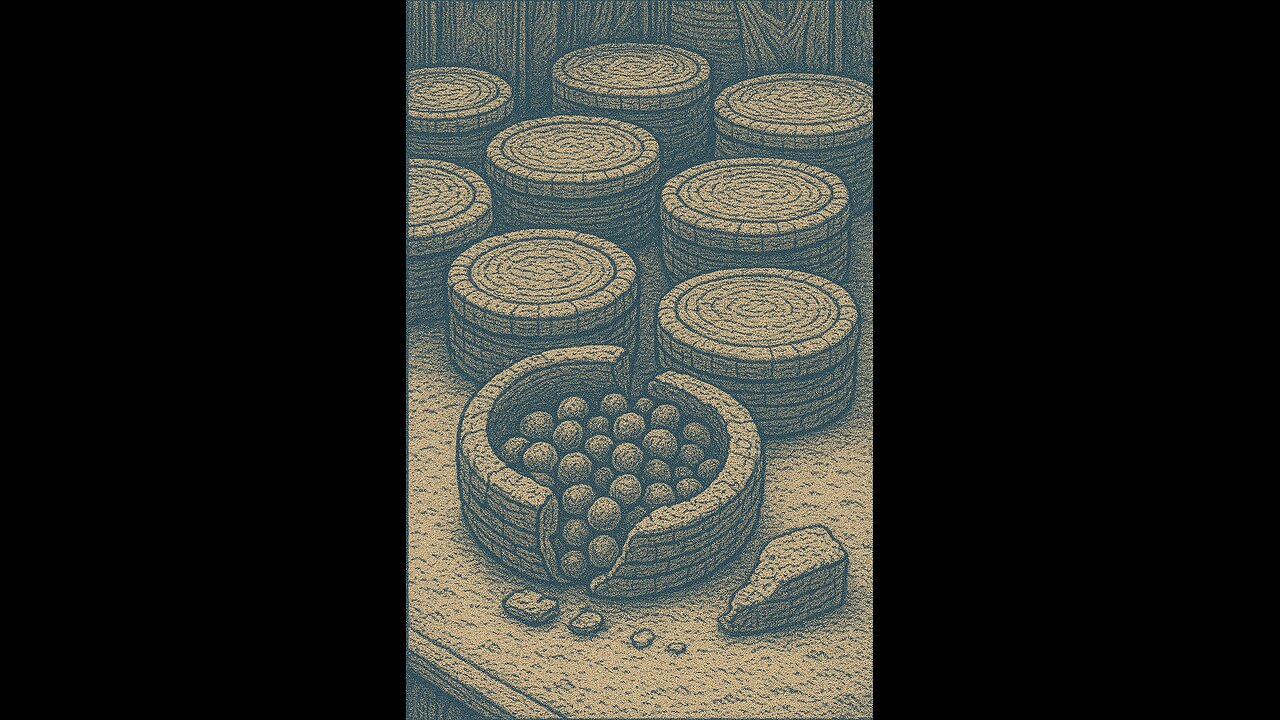Premium Only Content

Kangina Grapes
The traditional Afghan practice of Kangina—a centuries-old method for preserving grapes—originated in the arid highlands of central Afghanistan, particularly in provinces like Kandahar and Ghazni, where viticulture has thrived since pre-Islamic times.
Rooted in ancient agrarian customs, Kangina uses spherical clay vessels made from locally sourced mud and straw, a technology that likely evolved from early ceramic food storage traditions along Silk Road trade routes.
After harvest, select grape clusters are carefully laid inside the lower half of the vessel, covered with another clay bowl, and sealed with mud to create an oxygen-limited environment that naturally slows spoilage.
Archaeological and ethnographic evidence suggests similar preservation methods were practiced across Central and South Asia for millennia to extend the shelf life of fruit through long winters and trade journeys.
Beyond its practical purpose, Kangina reflects a broader cultural value of resourcefulness and continuity, preserving not only grapes but a tangible link to Afghanistan’s agrarian heritage and premodern ingenuity in food storage.
-
 LIVE
LIVE
megimu32
3 hours agoON THE SUBJECT: Halloween Nostalgia! LET’S GET SPOOKY! 👻
63 watching -
 1:24:56
1:24:56
Glenn Greenwald
5 hours agoThe Unhinged Reactions to Zohran's Rise; Dems Struggle to Find a Personality; DHS, on Laura Loomer's Orders, Arrests UK Journalist and Israel Critic | SYSTEM UPDATE #538
105K58 -

Spartan
4 hours agoBack from worlds. Need a short break from Halo, so single player games for now
13.9K -
 LIVE
LIVE
Eternal_Spartan
11 hours ago🟢 Eternal Spartan Plays FF7 Rebirth Episode 15 | USMC Veteran
45 watching -
 1:32:11
1:32:11
Tundra Tactical
3 hours ago $1.31 earnedProfessional Gun Nerd Plays Battlefield 6
13.3K -
 1:00:08
1:00:08
BonginoReport
6 hours agoDark Brandon Returns - Nightly Scroll w/ Hayley Caronia (Ep.164)
113K65 -
 49:24
49:24
Donald Trump Jr.
7 hours agoPeter Navarro Went to Prison So You Won't Have to | TRIGGERED Ep,286
57.9K41 -
 2:33:49
2:33:49
Nerdrotic
15 hours ago $2.92 earnedNerdrotic at Night 528
22.3K1 -
 DVR
DVR
xxTOWERDOGxx
4 hours ago👻🔪What's Your Favorite Scary Movie?👻🔪🟢Alienware Area 51🟢!discord🟢
3.11K -
 13:09:19
13:09:19
LFA TV
1 day agoLIVE & BREAKING NEWS! | MONDAY 10/27/25
211K40